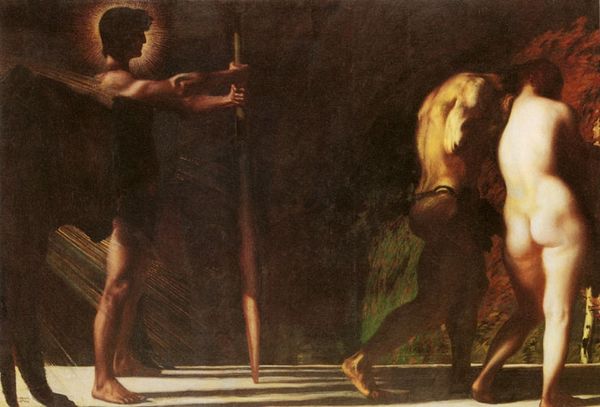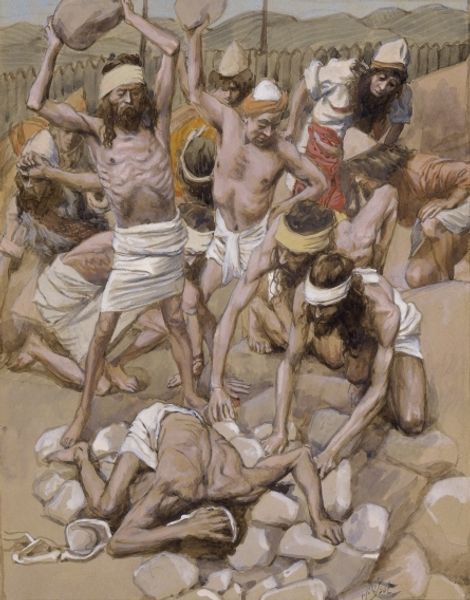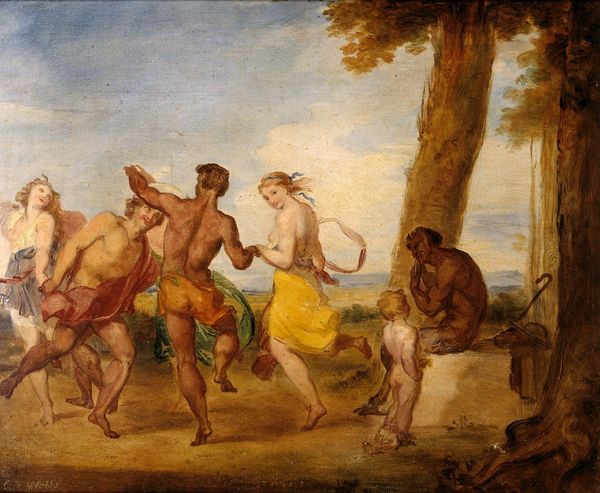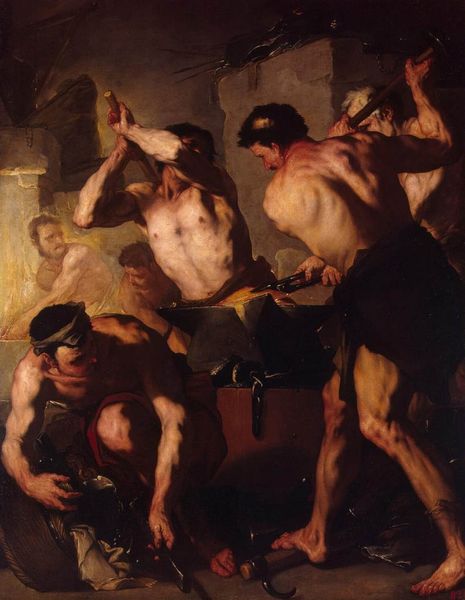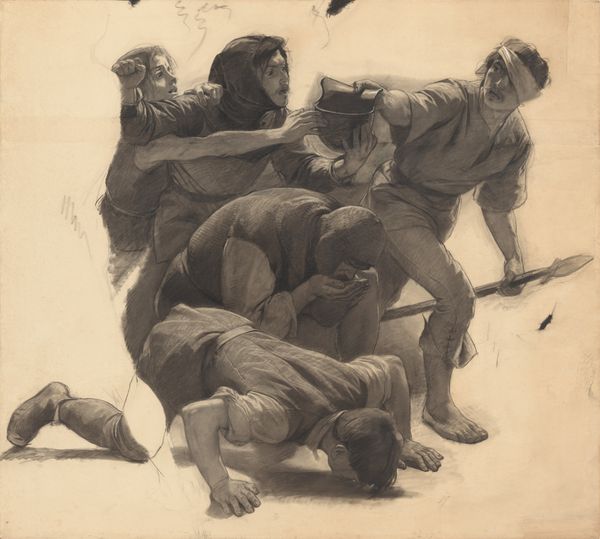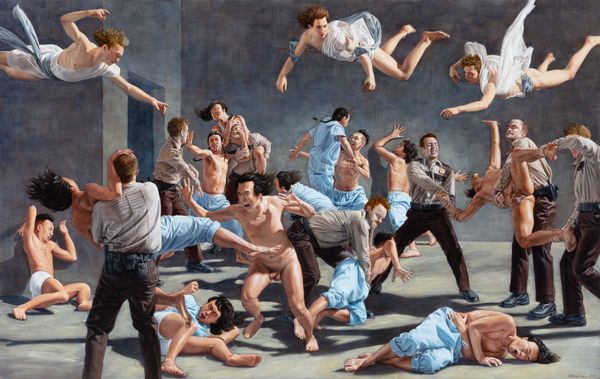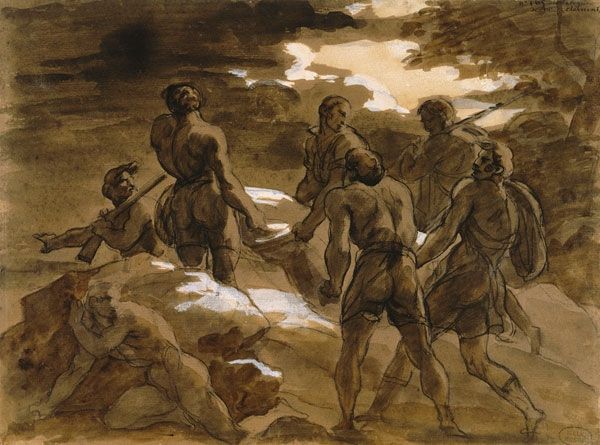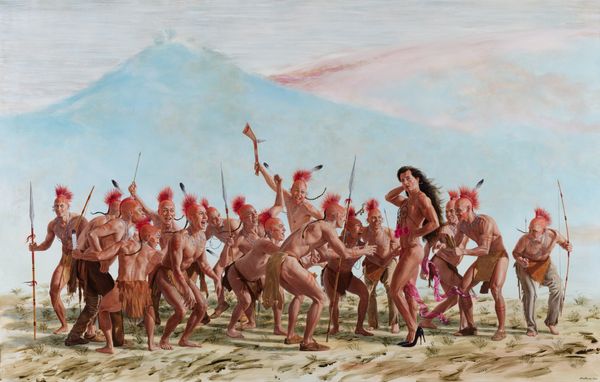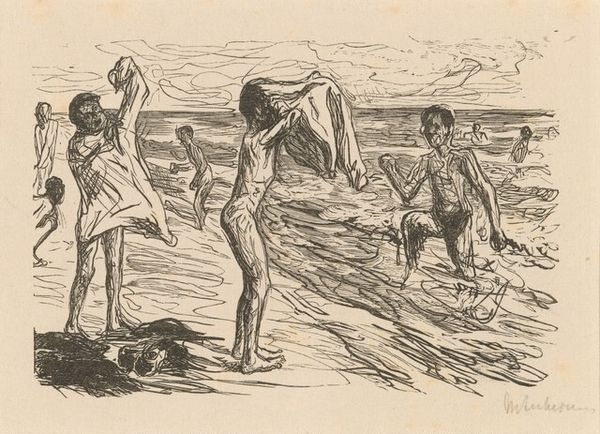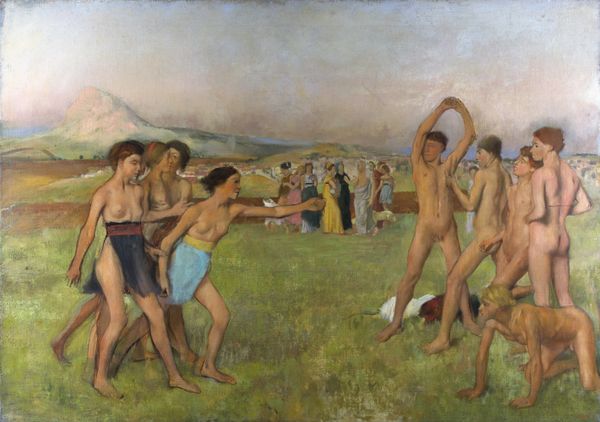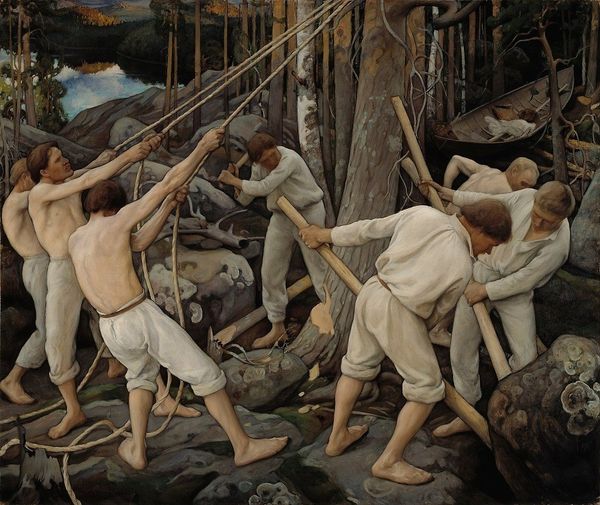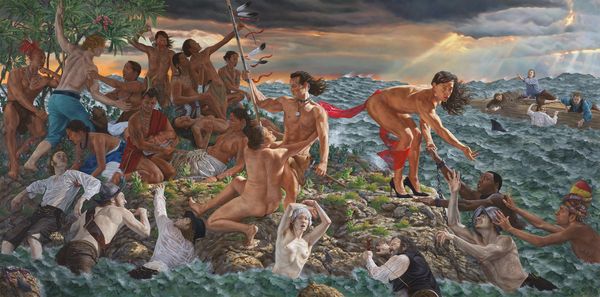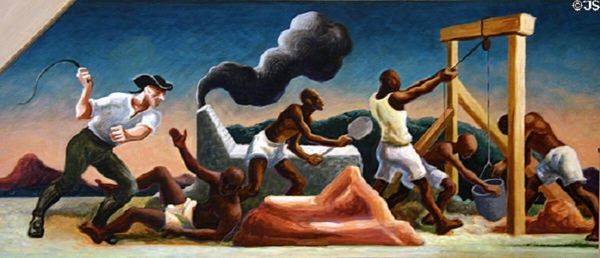
#
charcoal drawing
#
possibly oil pastel
#
charcoal art
#
oil painting
#
neo expressionist
#
underpainting
#
animal drawing portrait
#
portrait drawing
#
portrait art
#
fine art portrait
Copyright: Public domain
Editor: Here we have Romualdo Locatelli’s "Kris Dancers," painted in 1939. The material looks like it might be charcoal or oil pastel. I'm immediately struck by the dynamism; the figures are caught in such active poses. What stands out to you, looking at this piece? Curator: Indeed. My eye is drawn to the artist's masterful manipulation of light and shadow. Note how Locatelli uses chiaroscuro to sculpt the figures, creating a sense of depth and movement. Consider the interplay of positive and negative space. The active poses against a neutral ground create a visually stimulating composition. Editor: I see what you mean. The use of light definitely gives it drama. Does the relatively indistinct background play a role in directing our focus? Curator: Precisely. By minimizing the background detail, Locatelli forces our attention onto the figures and their dynamic interactions. It amplifies the energy and rhythm within the group. How does this lack of a distinct setting influence your understanding of the piece? Editor: It makes the dance feel almost universal, outside of any specific context. Almost as if the movement itself is the subject. I initially wanted more of the setting, but its absence definitely contributes to that heightened feeling. Curator: You have rightly observed this feature and the intentional ambiguities of form, color, and setting within "Kris Dancers" challenge our conventional understanding of dance and invite introspection into Locatelli's practice of semiotic and structuralist philosophies. This reading has been enriching, don't you agree? Editor: Absolutely! It’s amazing how much you can unpack just by looking closely at the composition. Curator: Precisely. Now, contemplate this analytical exercise with new perspective.
Comments
No comments
Be the first to comment and join the conversation on the ultimate creative platform.
